"We're not trying to reinvent the wheel here as the technique has been around for quite some time. It's all about combining the time-tested A-Frame structure with our new mobile ultrasonic irrigation technique and doubling your plant density per m2 at scale. Through R&D, successful trials, and partnerships, we're set to create the most productive leafy green system existing," says Lukas Bartusevicius, Co-founder of Freya Cultivation Systems, a Lithuanian agtech supplier.
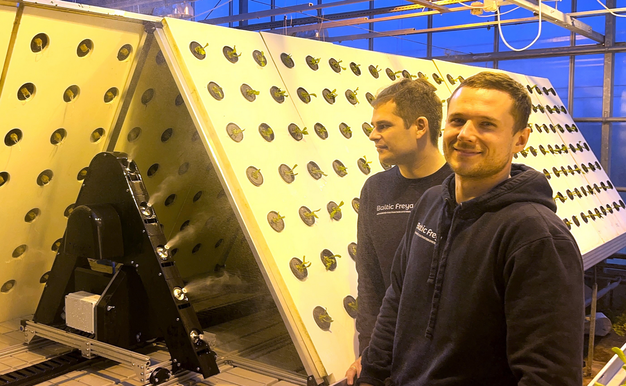
Pictured on the right, Lukas Bartusevicius
Starting with experiments on their ultrasonic nozzle technology, the young team came up with the AeroFrame. Consisting of plant boards at a 60-degree angle, the AeroFrame can increase plant count by 200%. Through the modular ultrasonic irrigation system, Lukas explains that all aeroponic benefits are maxed out – without any of the legacy drawbacks.
"Our low-energy e-nozzles don't need pressure to produce Aerosol, meaning that there's no clogging risk nor any reliance on high-pressure pumps. Full recirculation without any filtration is now possible". Using 10-minute intervals for feeding the roots with the nutrients needed, the irrigation robot has a 50-meter reach. Applying for a global patent back in October, the agtech startup is ready to take the next steps.
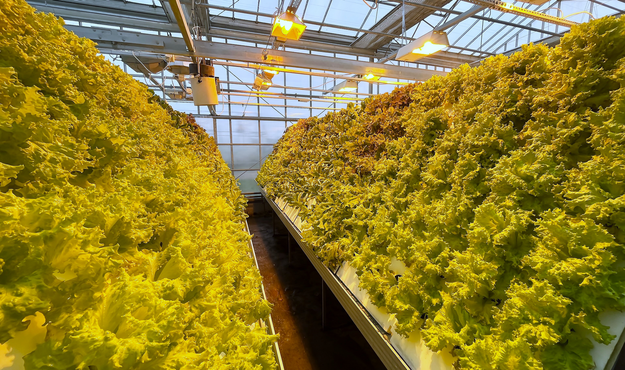
The A-frame in the works
How it works
Freya's hardware can be easily connected with other greenhouse components. The sensors and 360-degree cameras on the mobile irrigation robot allow the team to get insight into the rhizosphere of the plants to understand plant health and development, as well as manage irrigation intensity based on real-time data and the derived photosynthetic rate.
Using existing data from devices in the greenhouse, data can be deployed to the irrigation bot to feed the plants with the right nutrients with fully managed intensity. Then, along comes the right lighting set and temperatures. While collaborating with existing industry leaders, Freya is working out a way to adapt existing lighting installations to evenly distribute lighting on the angled surfaces without a cost impact.
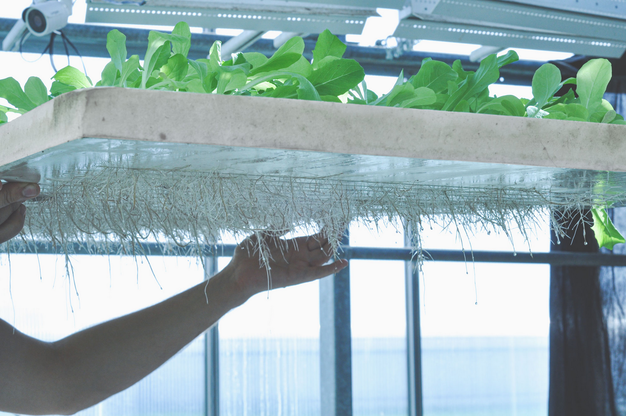
Promising trials
During trials, the team has been able to produce 90.4 kilograms of leafy greens per one square meter per year and has found that fewer disease and infestation instances occurred while using aeroponics. Cultivating inside a research-based greenhouse and adopting very little pest management, the team was happily surprised to encounter minimal pests. Growing inside an oxygen-rich environment, there is no root connection with flowing water. This results in stronger roots, positive morphological outcomes, and increased productivity.
"We are confident that with adapted automation and lighting, the AeroFrame will produce over 120 kg of greens per square meter per year. Beyond productivity, we want to explore the impact of doubling the plants against fixed costs. For example, heating and cooling are mostly related to the total area of the greenhouse. By doubling the number of plants per said area, we expect to drastically reduce the utilities and other costs per plant. This means that the EBITDA on per-plant basis is better than before," Lukas affirms.
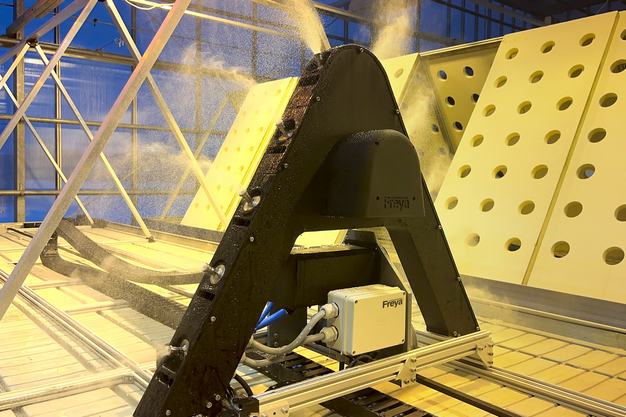
The irrigation system
Lowering CapEx
There are two types of scenarios where Freya sees itself coming in. One option is retrofitting an existing greenhouse that is using DWC, NFT, or another growing platform. The Aeroframe is built to be retrofitted into existing infrastructure, such as rolling benches or existing foundations or frames, to save money. Due to a doubled active cultivation area, a retrofit can result in double revenue per the same existing area. Secondly, Freya can seamlessly integrate into a to-be-built greenhouse as the business model is not area-based.
"We can cut down at the start-end of CapEx. Potentially, a 30-50% smaller greenhouse is needed to produce the same volume. It saves you money and time, thus you can enter the market even faster than expected. While retrofit projects will launch in 2024, at this stage, larger turnkey projects are a 2025 goal for us."
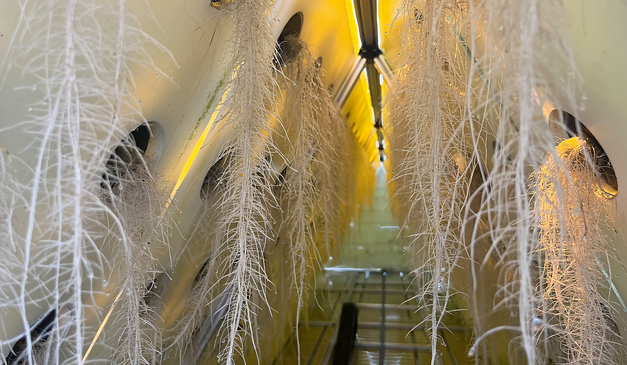
According to Lukas, the growers have several benefits to gain from this package: a more effective operation, higher productivity with a focus on plants, and techniques to produce plants and move them out even faster.
As well as diversifying the plant to consumer needs, equipment-wise, the grower will obtain a platform to manage the technology and integrate it with existing technology and software. The AeroFrame structure can be built by Freya, or an outsourced partner at the relevant location, and the mobile irrigation robot will be built and installed by Freya.
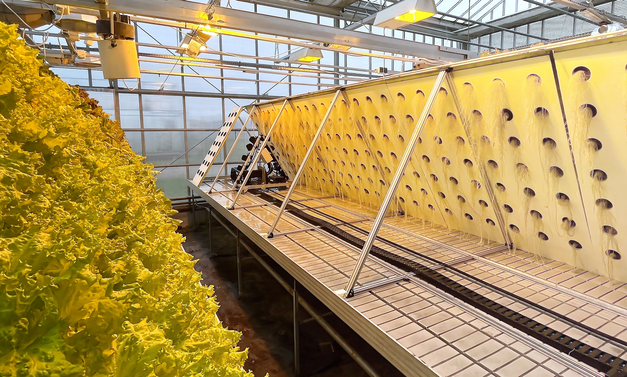
Wanted: R&D partners
"To scale our pilot scheme to a large greenhouse setup, we're looking for partners to pilot with. Collaborating with an experienced grower while piloting at their larger-scale facility will provide us with actual user feedback in a real operational scenario, as well as provide new data on aeroponic photosynthesis, given the influence of varying external parameters. Once new data is gathered, it will be used to optimize the product to fit real user needs, as well as to autonomously manage plant experience dynamics to produce the strongest, most uniform plants," Lukas adds.
"We'd love to test our product in a greenhouse environment to improve the system even more. We have tested the waters with smaller campaigns, yet now we are ready for a greater pilot push. For partners interested in piloting with us at this stage, we are ready to propose exclusive long-term benefits in pricing as well as access to new features. So reach out to us now, or come see our booth at Fruit Logistica in Hall 5.1, stand A-50."
At this stage, Freya is also looking for partners in the greenhouse development space to build out the platform and scale the ultrasonic irrigation technology.
Click here to view how Freya's technique works.
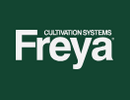 For more information:
For more information:
Freya Cultivation Systems
Lukas Bartusevicius, Co-founder
lukas@freyacultivation.com
https://freyacultivation.com
